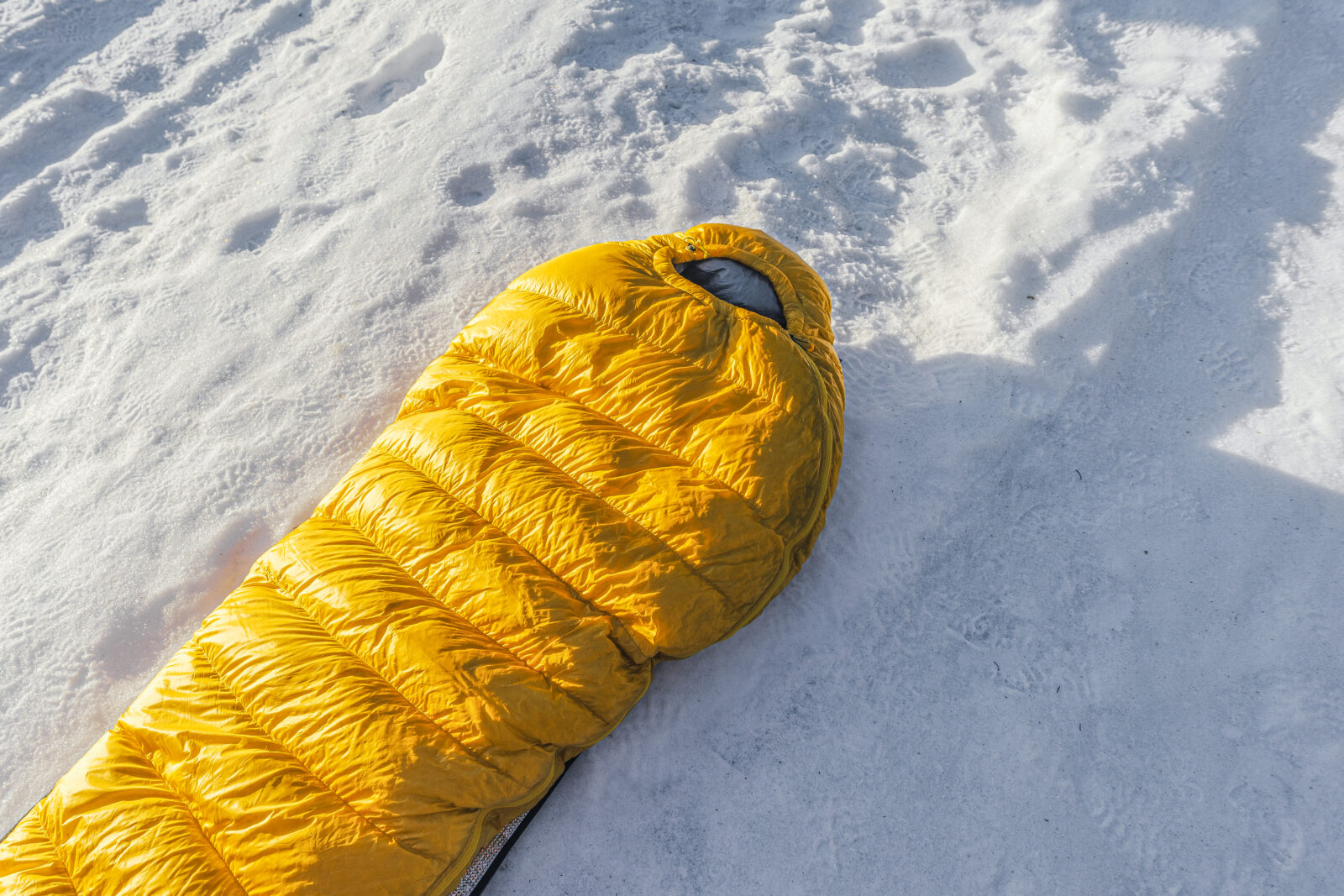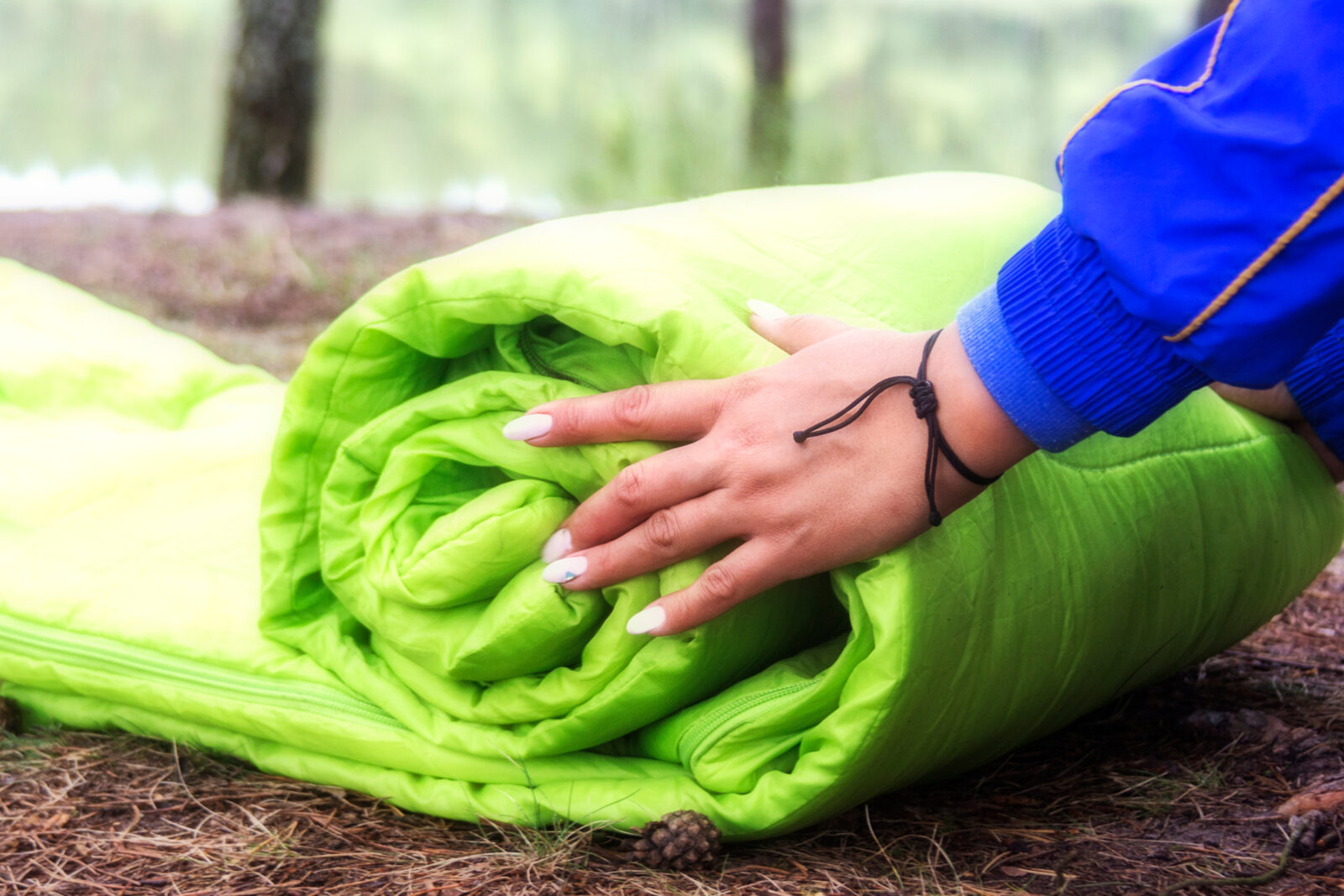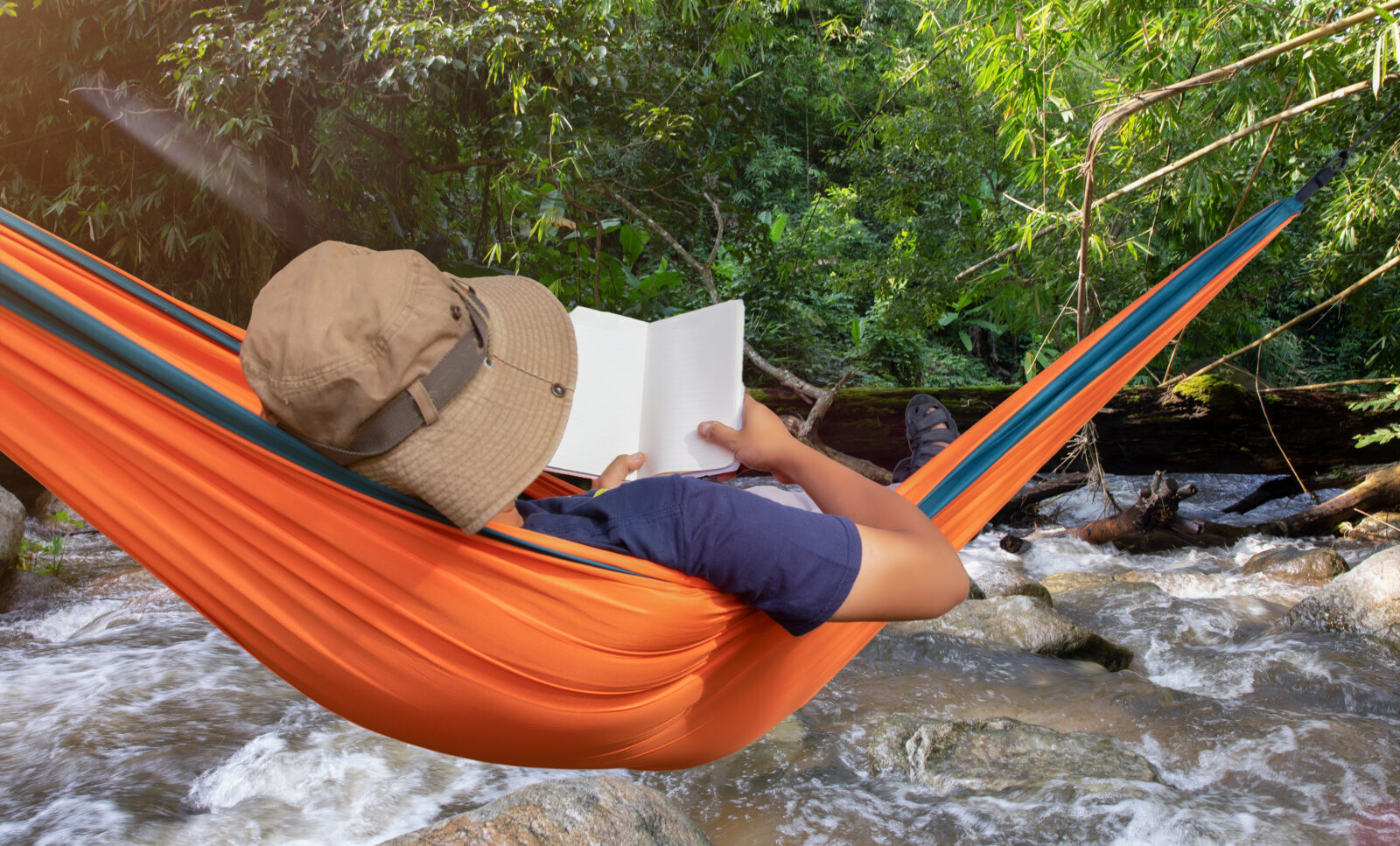Staying warm at night while camping is all about having the right gear on hand for the conditions.
However, every camper has to make one major decision before they head out on the trail; sleeping bag or quilt?
For some the decision is clear, but for folks who have very specific expectations of their gear, deciding between a sleeping bag and a quilt isn’t an easy task.
To get you started, we’ve put together this guide that compares camping quilts and sleeping bags so you can determine which sleep system is right for your adventures.
TL:DR
Sleeping bags are a classic choice for campers around the world because they’re warm, durable, easy to set up, and available in a wide range of different price points.
But, quilts are popular among the ultralight backpacking crowd, particularly in situations where weight savings and packability are of the utmost importance.
Page Contents
What's a sleeping bag?
Sleeping bags have been a staple of camping gear lists for decades. In fact, sleeping bags were first invented back in the 1870s by a Welshman named Pryce Jones, whose cloth sleeping bags were very popular among soldiers in the Russian army.
In the years since Jones’ revolutionary invention, the sleeping bag has developed quite a bit from its humble origins. Over the years, gear manufacturers have transformed these cloth sleeping bags into high-tech pieces of gear that are packed full of high-quality down or synthetic fill.
The standard sleeping bag has a rectangular or mummy shape with a hood and a zipper down one side so you can zip yourself up in an insulated covering for maximum warmth.
There are hundreds of models available today, some of which are best used for car camping trips while others are portable enough for backpacking adventures.
What's a quilt?
When compared to sleeping bags, camping quilts are a relatively modern invention. Although bedspread-type quilts have been around for centuries, backpacking quilts were developed over the last few decades as a way to create a lighter and more portable sleeping system for ultralight mountain expeditions and thru-hikes.
Quilts share many of the same characteristics as sleeping bags; they’re made with down or synthetic fill (though usually down) and they’re designed to keep you warm on chilly evenings.
However, quilts differ from sleeping bags in one key way. They are designed to cover just the top of your body, rather than wrapping you up in a cocoon of insulation like you’d experience with a sleeping bag.
As a result, quilts are best used on ultralight camping trips where weight savings and packability are key.
Price comparison
In years past, quilts were more of a niche piece of gear that was produced almost exclusively by small gear manufacturers. In fact, most companies that made quilts used to only do so on a custom-order basis, which invariably resulted in a pretty high sticker price.
These days, quilts are available for a range of different price points, though most quilts are between $250 and $400.
Alternatively, sleeping bags come in a wide range of different styles and price points, with most sleeping bag models costing between $200 and $350, and a few premium niche models costing as much as $900.
That being said, while you’ll be hard-pressed to find a budget-friendly quilt, however, there are plenty of decent sleeping bags available in the sub-$200 and even sub-$100 categories.
Winner : Sleeping bags because there are many budget-friendly models to choose from. Alternatively, there are relatively few quilts available for less than $250, so you’ll often have to spend more if you’re looking to purchase a quilt.
Ease of set up
Sleeping bags are decidedly simple pieces of gear. You simply need to take them out of their stuff sack, lie them flat on your sleeping pad, and then snuggle up inside.
With a quilt, however, there’s a bit more prep work involved to get yourself set up for the night. Since quilts don’t wrap completely around your body, you generally need to attach them to your sleeping pad to ensure that you’re sealed off from the cold air as you snooze.
This process can be a bit time consuming, especially if you’re new to the world of quilts. It can also be a bit fiddy and tricky, particularly in cold conditions if your hands are wrapped up in mittens or heated gloves.
Winner : Sleeping bags because they’re simple and easy to set up for the night. Meanwhile, quilts can require a bit of prep work before you can get some rest at the end of a long day of hiking.
Comfort levels
Although comfort is a subjective measurement, there are some key features of both sleeping bags and quilts that affect how comfortable they are at night.
Most backpacking and camping sleeping bags have a mummy-style shape, which can make them feel a bit constricting at night. While most people find that they get used to sleeping in a sleeping bag after a few camping trips, sleeping bags are generally best for folks who sleep on their side or back rather than those who like to sleep on their stomachs.
Alternatively, quilts tend to provide more wiggle room since they don’t fully enclose you in a cocoon-like structure. As a result, many campers find that they’re more comfortable to sleep in, particularly if you’re accustomed to sleeping on your stomach.
Winner : Quilts because they provide more freedom of movement as well as the ability to sleep on your back, side, or stomach with relative ease.
Insulation and warmth
Modern sleeping bags and quilts are made to keep you warm at a wide range of different conditions, from super puffy -20ºF (-29ºC) winter sleeping bags to 40ºF (4ºC) summer quilts. Therefore, when we compare sleeping bags and quilts, keep in mind that we’re doing so with models of similar temperature ratings in mind.
All else being equal, sleeping bags tend to provide more warmth than quilts, simply because they’re better able to seal you off from the cold. Since sleeping bags wrap completely around your body, your body heat is less likely to be able to sneak out of the sleeping bag, helping you to stay warmer for longer on your trip to cold locales like Glacier National Park.
Quilts, on the other hand, can be quite warm, but staying warm inside a quilt requires a high-quality sleeping pad with a high R-value. Since quilts don’t wrap completely around your body, you’ll have to rely quite a bit on the insulating properties of your sleeping pad to keep you warm at night.
Winner : Sleeping bags because they wrap completely around your body, creating a little chamber of warmth that traps in your body heat. Quilts can also be very good at keeping you warm, but they’re not always as efficient.
Packability and portability
The packability and portability of sleeping bags and quilts depends quite a bit on the type of insulation that they use (i.e., synthetic or down).
Since down fill is much more packable than synthetic fill, we’ll compare only down sleeping bags and down quilts here for a more accurate apples-to-apples comparison. In fact, since most quilts are made from down anyway, it’s difficult to compare synthetic sleeping bags and quilts in the first place.
If you compare a down quilt and a down sleeping bag, you’ll almost always find that the quilt is lighter and more compressible.
Why?
Well, quilts aren’t designed to wrap completely around your body, so they have less overall material in their construction. This allows them to pack down to a much smaller size than you’d achieve in a sleeping bag with the same down fill power and fill weight.
Winner : Quilts because they use less material in their construction which results in a smaller and lighter piece of gear to tote around in your hiking backpack.
Durability
The durability of a sleeping bag or quilt is generally determined by the thickness of the material used for the product’s shell fabric. When we talk about fabric thickness, we traditionally use a metric called a denier, which is simply a measure of how thick the treads are in a piece of fabric.
The vast majority of quilts are made with ultra-lightweight ripstop nylon or Pertex fabrics, some of which are as thin as just 7 denier, which is pretty darn thin. These fabrics, while expensive, ultralight, and very high-quality, need to be treated with care if you want them to last.
Meanwhile, sleeping bag shell fabrics are quite varied, with some budget models offering 20 denier shell fabrics and some ultralight models boasting similarly thin 7 or 10 denier shell materials.
Therefore, if you compare ultralight sleeping bags and backpacking quilts, you’ll find a similar level of durability in the long term. For folks who want a very durable sleeping system, a budget sleeping bag with a thicker shell fabric is generally your best bet.
Winner : Sleeping bags because you’re not likely to find many quilts that are made with thicker, more durable fabrics. However, it’s possible to make ultralight quilts and sleeping bags last for years if you wash, store, and care for them properly.
Versatility
In an ideal world, we’d each have a quiver of sleeping bags or quilts, each designed for use in a very specific environment. Unfortunately, most of us are limited either in budget or gear storage space, so owning half a dozen sleeping bags isn’t an option and choosing a couple of versatile sleeping bags or quilts is important.
As far versatility goes, most camping quilts are designed for summer or shoulder-season use on ultralight backpacking trips. You’ll find that nearly all quilts are made with similar high-end fabrics and down fill, but that they’re not particularly great for wet or winter conditions.
Alternatively, sleeping bags come in many different shapes, sizes, and types so they’re generally more appropriate for a range of pursuits.
Additionally, while quilts are almost always designed for solo campers, you can even find double sleeping bags for folks that like to camp with their partners.
Winner : Sleeping bags because there’s a greater diversity of models on the market, each of which can perform well in a wider range of conditions than your standard camping quilt.
Gaby Pilson
Gaby is a professional mountain guide with a master’s degree in outdoor education. She works primarily in the polar regions as an expedition guide, though she can be found hiking, climbing, skiing, sailing, or paddling in some of the world’s most amazing places when not at work.


